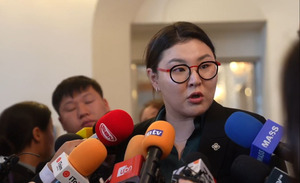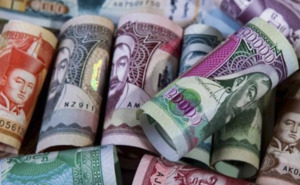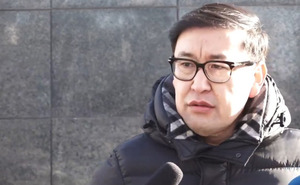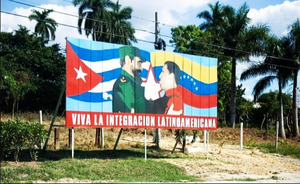
The National Statistical Office (NSO) of Mongolia today presented the outcomes of the poverty estimation outcomes in a seminar entitled “Poverty Situation - 2016” organized jointly with the World Bank. The two institutions have been collaborating in developing methodology for estimating poverty rate through household income and expenditure surveys as well as living standard measurement survey since 2002. This time, the poverty rate has been jointly estimated based on the 2016 Household Socio-Economic Survey.
This year poverty rate has been estimated at an aimag level for the first time in Mongolia, based on the 2016 Household Socio-Economic Survey. The poverty rate shows the changes in the living standards during the period of time and does not reflect the changes occurred since the beginning of 2017.
During the 2014 launch of the poverty estimation outcomes, NSO mentioned that the consumption level of the people who got out of poverty was just above the national poverty line, making many people vulnerable to slipping back into poverty in case of negative effects from economic shocks. The outcome of the current survey shows that the people who were above the poverty line in 2014 have slipped back into poverty due to negative consequences of the socio economic shocks in 2015-2016.
The economic growth has been slowing down since 2012, lowering to 11.6 percent in 2013, 7.9 percent in 2014, 2.4 percent in 2015, and 1.2 percent in 2016. Thus, the economy grew by only 3.6 percent in total between 2015 and 2016, while in 2012-2014 the growth was 20 percent.
Factors behind worsening livelihoods in 2015-2016 included decline in the construction, professional, science and technology sector outputs by 6.3-7.4 percent in 2016, drop in the number of employees in the construction sector by 16,700 people, and zero increase in salary and pension in 2015 and 2016.
According to the estimation, concluded jointly by NSO and the World Bank, the poverty rate in Mongolia reached 29.6 percent in 2016 – an increase by 8.0 percentage points from the poverty rate of 21.6 percent in 2014. This shows that 907.5 thousand people out of the total 3.0 million people in Mongolia were living in the poverty. In 2016, the poverty depth amounted to 7.7 percent representing a growth of 2.5 percentage points from 2014 level, and poverty severity amounted to 2.9 percent, an increase by 1.0 percentage point from 2014 level.
Comparison of the livelihood standards in urban and rural areas showed that the poverty has increased more in rural areas then in urban areas. Although the overall number of people living in rural areas is less than the number of urban residents, the poverty rate in rural areas has increased by 10.1 percentage points. The poverty rate in rural areas declined by 11.7 percentage points in 2014 from the 2012 levels, but resumed back by 10.1 percentage points in 2016, reflecting how the households with consumption level just above the national poverty line, affected by minor socio-economic difficulties and weather conditions, shifted below the poverty line.
Regional poverty rate estimations show the poverty rate increase of 12.5 percentage points in Eastern region, 10.1 percentage points in Western region, 8.4 percentage points in Ulaanbaatar city, 8.3 percentage points in Khangai region, and 4.6 percentage points in Central region - the lesser increase compared to other regions.
Poverty outlook by regions shows the lowest poverty in Uvs aimag among other four Western aimags with the poverty scope of 24.2 percent. Poverty level in Zavkhan is highest with the poverty scope of 47.5 percent. In Khangai region, the poverty scope in Orkhon aimag is 23.5 percent – the lowest compared to five regional aimags, while poverty scope in Uvurkhangai aimag has the highest in the region at 41.5 percent. In the Central region, Umnugovi had less poverty than the other six aimags with the aimag poverty scope at 15.4 percent, while Govisumber aimag had more poverty with the scope of 52.4 percent. In the Eastern region, all three aimags have similar levels of poverty with poverty scope of approximately 41.5-47.0 percent.
Poverty indicators, by aimags, 2016
|
|
Poverty scope |
Poverty depth |
Poverty severity |
|
National average |
29.6 |
7.7 |
2.9 |
|
Western region |
36.0 |
9.7 |
3.7 |
|
Bayan-Ulgii |
43.4 |
9.0 |
3.4 |
|
Govi-Altai |
43.3 |
12.2 |
4.7 |
|
Zavkhan |
47.5 |
14.6 |
5.7 |
|
Uvs |
24.2 |
6.0 |
2.3 |
|
Khovd |
36.7 |
9.3 |
3.4 |
|
Khangai region |
33.6 |
8.2 |
2.9 |
|
Arkhangai |
37.6 |
8.4 |
2.8 |
|
Bayankhongor |
38.8 |
8.2 |
2.8 |
|
Bulgan |
31.4 |
7.0 |
2.2 |
|
Orkhon |
23.5 |
6.6 |
2.5 |
|
Uvurkhangai |
41.1 |
11.7 |
4.4 |
|
Khuvsgul |
29.1 |
6.9 |
2.4 |
|
Central region |
26.8 |
7.0 |
2.7 |
|
Gobisumber |
52.4 |
17.5 |
7.9 |
|
Darkhan-Uul |
33.4 |
8.1 |
2.9 |
|
Dornogobi |
23.2 |
6.3 |
2.6 |
|
Dundgobi |
22.9 |
5.4 |
1.8 |
|
Umnugobi |
15.4 |
2.6 |
0.8 |
|
Selenge |
36.4 |
11.0 |
4.6 |
|
Tuv |
17.3 |
3.7 |
1.3 |
|
Eastern region |
43.9 |
12.5 |
4.8 |
|
Dornod |
41.5 |
12.3 |
4.8 |
|
Sukhbaatar |
47.0 |
13.7 |
5.4 |
|
Khentii |
43.8 |
11.7 |
4.3 |
|
Ulaanbaatar |
24.8 |
6.4 |
2.5 |
Poverty scope was higher than the national average in all aimags except Uvs, Orkhon, Khuvsgul, Dornogobi, Dundgobi, Umnugovi, and Tuv.
For Mongolian version please visit here
Монгол эхийг энд дарж уншина уу























Сэтгэгдэл байхгүй байна